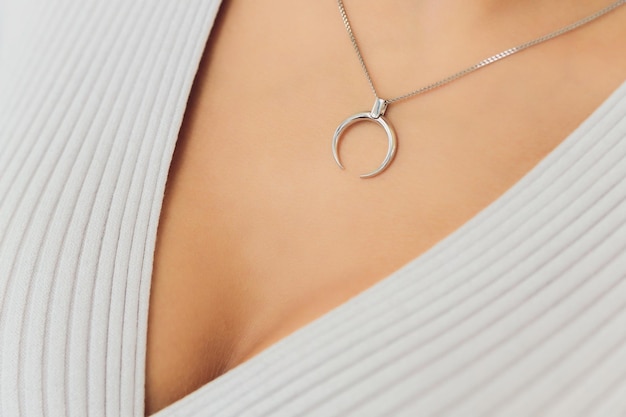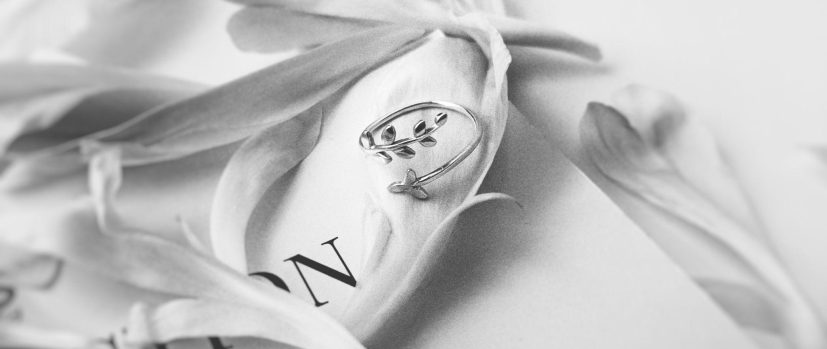The Evolution Of Minimalist Jewelry: From Subtle To Statement
Jewelry, throughout history, has always been more than just adornment; it’s been a form of expression, status, and art. From the intricately designed crowns of monarchs to the everyday trinkets of the commoner, every piece tells a story. Within this expansive universe of sparkle and metal, minimalist jewelry has etched a distinct mark.
Its very essence lies in the art of understatement, of finding beauty in simplicity and restraint. But don’t be fooled by its subdued character. Minimalist jewelry is a powerful trend that has spanned generations, appealing to both the sophisticated connoisseur with an eye for detail and the average jewelry buyer looking for elegance in simplicity.
The journey of minimalist jewelry is fascinating, weaving a tapestry of subtle grace and bold assertions. As we dive deeper into this exploration, we uncover the nuances that have made minimalist jewelry not just a fleeting trend, but a timeless tradition.
Historical Roots Of Minimalist Jewelry
Long before the contemporary dialogue on minimalism gained momentum in the chic salons of fashion cognoscenti, its seeds were already being sown by the ancient civilizations. The Greeks, with their unparalleled aesthetic sensibility, often gravitated towards minimalism, even if not in name.
Their jewelry pieces, whether delicate gold bands or rings showcasing a singular gem, spoke of an elegance rooted in simplicity. They championed the belief that true beauty doesn’t need embellishment but can stand proud in its innate form. This approach mirrored not just in their jewelry, but in their grand architecture and sculptures as well, all bearing testimony to a love for design that was simple yet profoundly impactful.
On the banks of the Nile, the Egyptians were echoing a similar sentiment. Their jewelry designs, while distinct from the Greeks, carried the hallmark of clarity and streamlined beauty. Be it the revered necklaces worn by the pharaohs or the everyday pieces of the common folk, Egyptian jewelry showcased the power of restraint, often leaning into the inherent allure of the materials used.
Then, as Europe emerged from the medieval ages, the Renaissance dawned, ushering in an era of renewed creativity. Art, literature, and philosophy flourished, and so did the world of jewelry. While the age celebrated ornate designs, there was a discernible shift towards appreciating the raw beauty of materials and the meticulous craftsmanship of artisans. Diamonds, emeralds, and pearls were not just mere adornments but were celebrated for their inherent beauty, setting the stage for the minimalism we recognize today.
The Birth Of Modern Minimalism In The 20th Century
The tumultuous backdrop of the 20th century, marked notably by the World Wars, ushered in a transformative era that fundamentally altered societal perspectives on luxury, values, and aesthetics. Gone were the days when luxury was synonymous with grandiosity and excess; the new world order championed the ideals of simplicity, functionality, and deliberate intent. This paradigm shift was palpably evident in the realm of jewelry.
Artists and designers, each a visionary in their own right, began to challenge and reinterpret traditional notions of adornment. Figures like Alexander Calder, renowned for infusing the dynamic essence of mobile art into his jewelry pieces, and Charlotte Perriand, with her unwavering commitment to functional yet aesthetically appealing designs, emerged as the vanguards of this movement. Their pioneering work not only redefined the contours of luxury but also laid the foundational ethos for what we now recognize as modern minimalist jewelry.
Characteristics Of Minimalist Jewelry
More than just a design, minimalist jewelry is an ethos. Every curve, edge, and surface is intentional. It champions the idea that less can indeed be more. Raw metals and natural stones often feature in their untouched beauty, and there’s an emphasis on the intrinsic value of the material – making it a preferred choice for many seeking genuine fine jewelry.
The Psychological Appeal Of Minimalism
In today’s age of digital overload, there’s an increasing desire to return to basics, to declutter and simplify. Minimalist jewelry, with its subtle charm, provides an antidote to the excesses of modern life. It’s not about being understated for the sake of it but about finding beauty in simplicity and authenticity.
Evolutionary Milestones In Minimalist Jewelry

Minimalism, contrary to belief, isn’t static. Over the years, it has welcomed innovative shifts. Geometric shapes, once rigidly symmetrical, began experimenting with asymmetry. The demand for personalized pieces indicated a shift in the jewelry buyer’s mindset – from mass-produced to unique, meaningful designs.
The Transition To Statement Minimalism
While minimalism traditionally champions subtlety, the trend has seen a bold transition. Think statement necklaces with clean lines or oversized earrings with simple geometric shapes. This isn’t a contradiction but an evolution. It shows that even within constraints, there’s room for audacity and drama.
Minimalist Jewelry In Pop Culture
Pop culture has always mirrored societal trends, and the minimalist jewelry movement is no exception. Iconic personalities like Audrey Hepburn, with her simple pearl necklace, or Steve Jobs with his round glasses and minimal wrist accessories, have made lasting impacts. These icons, coupled with cinema and television’s influence, have played pivotal roles in elevating minimalist jewelry from niche to mainstream.
The Global Influence And Diversity
From Tokyo to Milan, minimalist jewelry has found its voice. Yet, its expression varies. In the East, especially in countries like Japan and South Korea, minimalism merges seamlessly with age-old traditions. In contrast, the West often adds a contemporary spin, infusing modern design principles into classic styles. The result? A global, yet diverse, minimalist jewelry landscape.
Caring For Minimalist Jewelry
An investment in fine jewelry, minimalist or not, deserves care and attention. Regular cleaning, safe storage, and periodic professional checks can ensure your jewelry’s longevity. With minimalist pieces, even a small scratch can be noticeable, given their understated nature. Therefore, whether you’re a professional jewelry buyer or a novice, understanding maintenance is key.
Conclusion
Minimalist jewelry, with its rich history and contemporary appeal, stands as a testament to the adage – less is more. Its timeless allure suggests that this isn’t just a passing trend but a lasting movement, set to inspire and captivate for generations.
Read Also:








